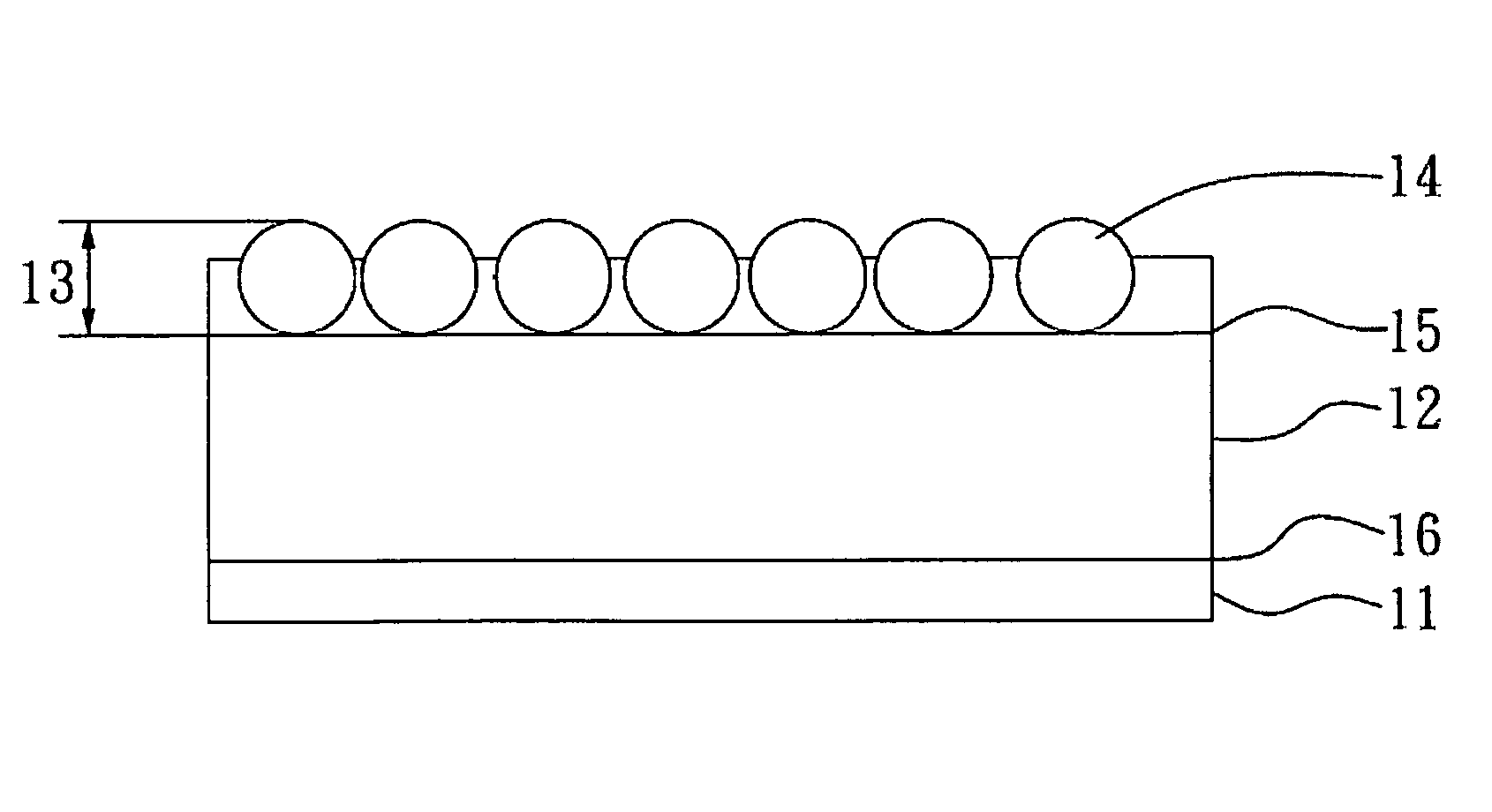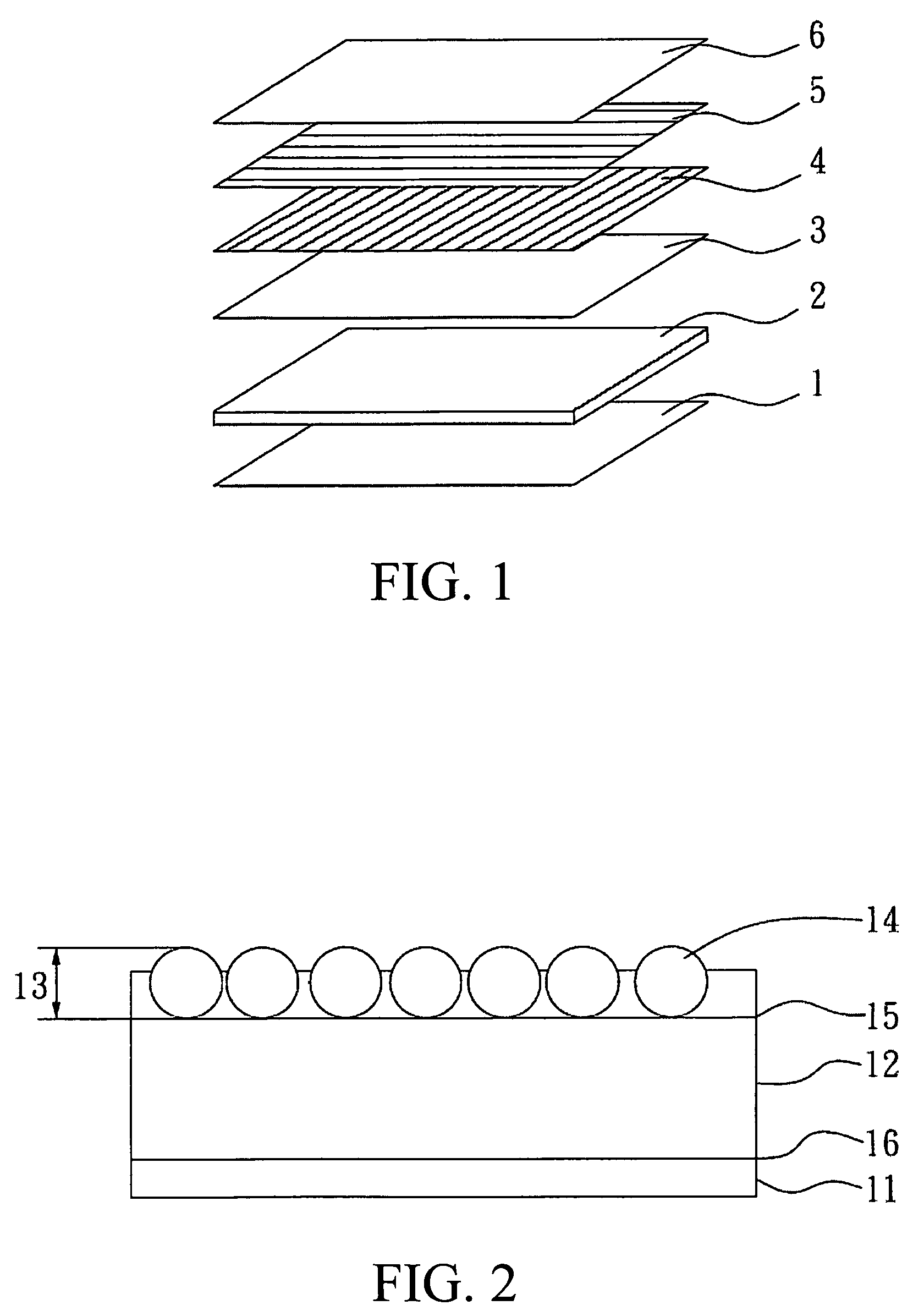Scratch-resistant optical film having organic particles with highly uniform particle size
a technology of organic particles and optical films, applied in the field of optical films, can solve the problems of no other solutions in the industry, affecting the optical properties, and affecting the quality of optical films, etc., and achieves the effects of reducing the cost of surface diffusion, and reducing the cost of diffusion
- Summary
- Abstract
- Description
- Claims
- Application Information
AI Technical Summary
Benefits of technology
Problems solved by technology
Method used
Image
Examples
preparation example 1
[0054]Formulating a UV curable resin formulation A: In a 250 mL glass bottle, 40 g toluene was added. With high speed stirring, the following substances were added in sequence: 10 g dipentaerythritol hexaacrylate, 2 g trimethylol propane trimethacrylate, 14 g pentaerythritol triacrylate, an oligomer: 30 g of an aliphatic urethane hexaacrylate [Etercure 6415-100, Eternal Co.], and a photoinitiator: 4 g 1-hydroxy cyclohexyl phenyl ketone to provide 100 g of a UV curable resin formulation A with a solids content of about 60%.
preparation example 2
[0055]Formulating a UV curable resin formulation B: In a 250 mL glass bottle, 34 g toluene and 6 g butanone were added. With high speed stirring, the following substances were added in sequence: 16 g dipentaerythritol hexaacrylate, 2 g trimethylol propane trimethacrylate, 20 g pentaerythritol triacrylate, an oligomer: 18 g of an aliphatic urethane hexaacrylate [Etercure 6112-100, Eternal Co.], and a photoinitiator: 4 g 1-hydroxy cyclohexyl phenyl ketone to provide 100 g of a UV curable resin formulation B with a solids content of about 60%.
preparation example 3
First Hard Coat Layer
Diffusion Layer
[0056]To a 250 ml glass bottle, 24 g toluene and 8 g butanone were added as a solvent. With high speed stirring, the following substances were added in sequence: 4 g acrylic particles with an average particle size of 8 μm [SSX-108, SEKISUI PLASTICS Co.; highly crosslinked organic particles produced from 50:50 methyl methacrylate and ethylene glycol dimethacrylate and having a particle size of 8 μm±5%]; 40 g of the UV curable resin formulation A prepared in Preparation Example 1 (with a solids content of about 60%, Eternal Company); a thermal setting resin: 20 g of polymethacrylic polyol resin [Eterac 7361-ts-50, Eternal Company] (with a solids content of about 50%); 2 g of a curing agent [Desmodur 3390, Bayer Co.] (with a solids content of about 75%); and 2 g of an anti-static agent [GMB-36M-AS, Marubishi Oil Chem. Co., Ltd] (with a solids content of about 20%) to prepare a coating material with a total weight of about 100 g and solids content of ...
PUM
| Property | Measurement | Unit |
|---|---|---|
| mean particle size | aaaaa | aaaaa |
| thickness | aaaaa | aaaaa |
| thickness | aaaaa | aaaaa |
Abstract
Description
Claims
Application Information
 Login to View More
Login to View More - R&D
- Intellectual Property
- Life Sciences
- Materials
- Tech Scout
- Unparalleled Data Quality
- Higher Quality Content
- 60% Fewer Hallucinations
Browse by: Latest US Patents, China's latest patents, Technical Efficacy Thesaurus, Application Domain, Technology Topic, Popular Technical Reports.
© 2025 PatSnap. All rights reserved.Legal|Privacy policy|Modern Slavery Act Transparency Statement|Sitemap|About US| Contact US: help@patsnap.com



